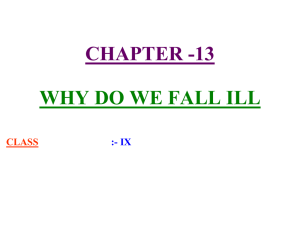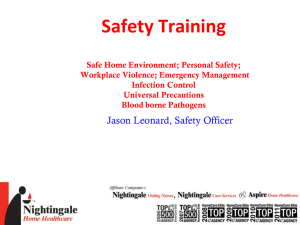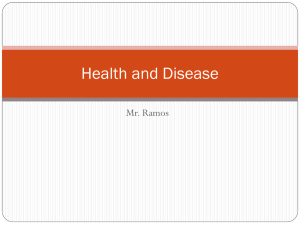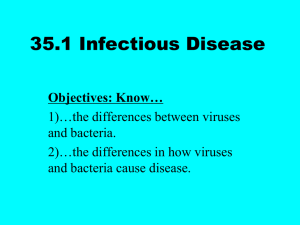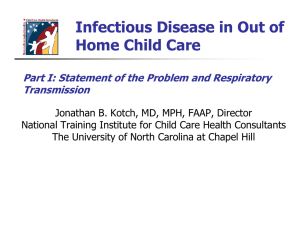Disposal of Medical Waste in Louisiana
advertisement
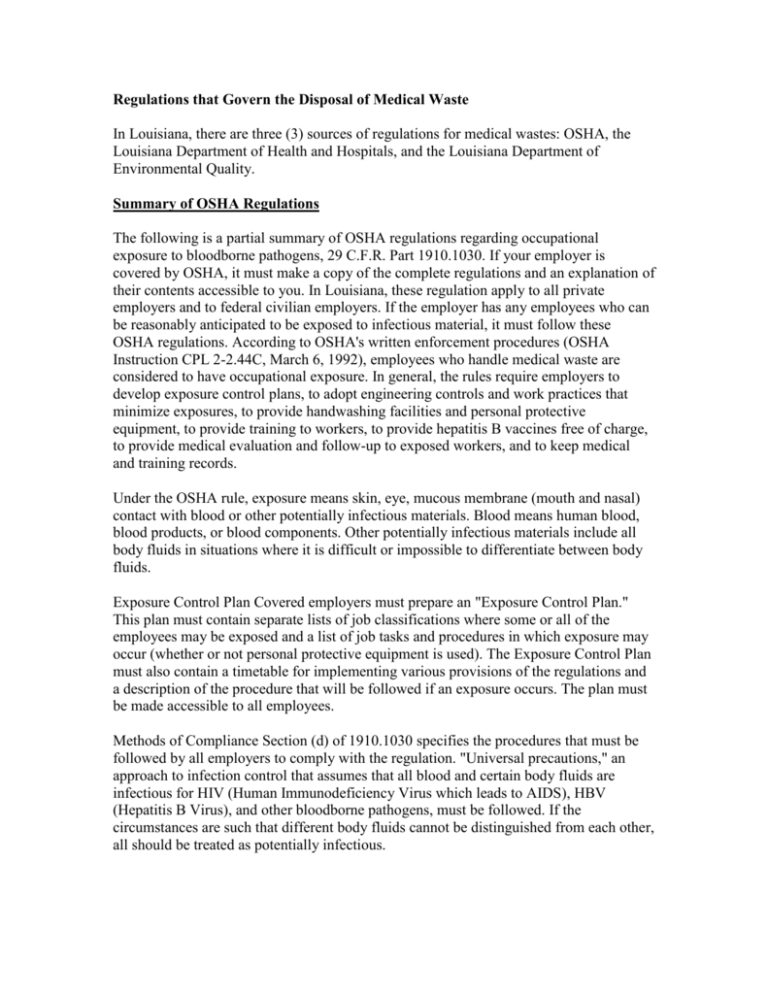
Regulations that Govern the Disposal of Medical Waste In Louisiana, there are three (3) sources of regulations for medical wastes: OSHA, the Louisiana Department of Health and Hospitals, and the Louisiana Department of Environmental Quality. Summary of OSHA Regulations The following is a partial summary of OSHA regulations regarding occupational exposure to bloodborne pathogens, 29 C.F.R. Part 1910.1030. If your employer is covered by OSHA, it must make a copy of the complete regulations and an explanation of their contents accessible to you. In Louisiana, these regulation apply to all private employers and to federal civilian employers. If the employer has any employees who can be reasonably anticipated to be exposed to infectious material, it must follow these OSHA regulations. According to OSHA's written enforcement procedures (OSHA Instruction CPL 2-2.44C, March 6, 1992), employees who handle medical waste are considered to have occupational exposure. In general, the rules require employers to develop exposure control plans, to adopt engineering controls and work practices that minimize exposures, to provide handwashing facilities and personal protective equipment, to provide training to workers, to provide hepatitis B vaccines free of charge, to provide medical evaluation and follow-up to exposed workers, and to keep medical and training records. Under the OSHA rule, exposure means skin, eye, mucous membrane (mouth and nasal) contact with blood or other potentially infectious materials. Blood means human blood, blood products, or blood components. Other potentially infectious materials include all body fluids in situations where it is difficult or impossible to differentiate between body fluids. Exposure Control Plan Covered employers must prepare an "Exposure Control Plan." This plan must contain separate lists of job classifications where some or all of the employees may be exposed and a list of job tasks and procedures in which exposure may occur (whether or not personal protective equipment is used). The Exposure Control Plan must also contain a timetable for implementing various provisions of the regulations and a description of the procedure that will be followed if an exposure occurs. The plan must be made accessible to all employees. Methods of Compliance Section (d) of 1910.1030 specifies the procedures that must be followed by all employers to comply with the regulation. "Universal precautions," an approach to infection control that assumes that all blood and certain body fluids are infectious for HIV (Human Immunodeficiency Virus which leads to AIDS), HBV (Hepatitis B Virus), and other bloodborne pathogens, must be followed. If the circumstances are such that different body fluids cannot be distinguished from each other, all should be treated as potentially infectious. Employers are required to employ "engineering and workplace controls" wherever possible to minimize or eliminate employee exposure. Engineering controls either remove the hazard or isolate the worker from exposure. An example of an engineering control is the use of a ventilated cab on earth-moving equipment to protect workers from dust and aerosols. Workplace controls alter the manner in which tasks are performed to reduce exposure-for example, always cleaning equipment with implements or with highpressure hoses, rather than by hand. Employers are required to examine, maintain, and replace engineering controls on a regular basis to insure their effectiveness. Personal Protective Equipment Appropriate personal protective equipment must be used to reduce risk of worker exposure. Employers must make readily available at no cost to employees appropriate specialized clothing or equipment to protect against exposure to blood and other potentially infectious materials. Personal protective equipment must prevent such materials from passing through to an employee's work clothes, street clothes, undergarments, skin, eyes, mouth, or other mucous membranes under normal conditions of use and for the duration of time that the equipment is in use. Personal protective equipment consists of, but is not limited to, gloves, face shields, masks, and eye protection, gowns, aprons, and similar items. Employers must ensure that appropriate personal protective equipment is used and used correctly. Employers must also see to it that personal protective equipment is properly cleaned, laundered, repaired, replaced, or disposed as needed, at no cost to the employee. The employer must ensure that employees observe precautions for handling and using personal protective equipment, including: removal of garments penetrated by blood and other infectious material as soon as possible; placing contaminated protective equipment in designated areas or containers for storing, washing, decontaminating, or discarding each day or shift; replacing gloves if torn, punctured, contaminated, or if their ability to function as a barrier is compromised; utility gloves may be decontaminate for re-use if the integrity of the glove is not compromised. However, they must be discarded if they are cracked, peeling, torn, etc.; wearing appropriate face and eye protection such as goggles, glasses with solid side shields or chin-length face shields when splashes, sprays, spatters, or droplets of infectious materials pose a hazard to the eyes, nose, or mouth. Handwashing and Hygiene Employers must provide handwashing facilities that are readily accessible to all employees. When this is not feasible, they must provide antiseptic towelettes. Employers must ensure that employees wash their hands as soon as possible after removing gloves and other personal protective equipment, or after contact with potentially infectious material. Disposal Methods for Medical Waste at Health Care Facilities The rules provide requirements for handling contaminated sharps, including a requirement that they be placed in a closed, puncture-resistant, leakproof, color-coded (or biohazard-labeled) containers prior to disposal. If the container can leak, it must be placed in a second closed, leakproof container. Blood and other potentially infectious material (other than sharps) must be placed in leakproof, color-coded (or biohazard-labeled) container before it leaves the facility. If outside contamination occurs, or if the container is punctured, it must be placed in another leakproof, labeled or color-coded container. Disposal of medical wastes must be in accordance with all applicable federal, state, and local regulations. Training All persons with a potential for exposure must be provided with adequate training and information including general explanation of the modes of transmission, symptoms, epidemiology, warning signals relating to possible exposure, and procedures to follow if exposure occurs. Hepatitis B Vaccine Covered employers must make available, free of charge, and at a reasonable time and place, the hepatitis B vaccine and vaccination series to all employees who are at risk of occupational exposure. Employees may decline either antibody prescreening or vaccination; if they decline vaccination, they must sign a declination form. If an Exposure Incident Occurs Employees should immediately report exposure incidents. The employer is responsible for establishing the procedure for evaluating exposure incidents. Recordkeeping The employer must keep medical records and records of training sessions. Medical records must be kept confidential (though an employee and his or her representative may see and copy his own record on request) and must be maintained for thirty (30) years after employment has ended. Training records, including the dates, content, names and qualifications of trainers, and names and job titles of trainees, must be kept for three (3) years. Summary of Louisiana Department of Health and Hospitals Regulations This agency has regulations governing the packaging, labeling, storage, transportation, and treatment of medical waste, contained in the Louisiana Sanitary Code, Chapter XXVII. Definitions and Exclusions - The regulations define several categories-medical waste, infectious biomedical waste, and potentially infectious biomedical waste. The latter is used most extensively throughout the regulations, and is defined, in pertinent part, as follows: "...waste considered likely to be infectious by virtue of what it is or how it may have been generated in the context of health care or health care like activities." "Potentially Infectious Biomedical Waste" includes, but is not limited to the following: 1) Cultures and stocks of infectious agents and associated biologicals, including cultures from medical and pathological laboratories, from research and industrial laboratories. 2) Human pathological wastes including tissue, organs, body parts and fluids that are removed during surgery or autopsy. 3) Human blood, human blood products, blood collection bags, tubes and vials. 4) Sharps used or generated in health care or laboratory settings. 5) Bandages, diapers, "blue pads," and other disposable materials if they have covered infected wounds or have been contaminated by patients isolated to protect others from the spread of infectious diseases. 6) Any other refuse which has been mingled with potentially infectious biomedical waste. Eating utensils, animal carcasses and bedding, and "very small quantities" (less than 250 grams or 1/2 pound) of human or animal tissue, clean dressings, and clean surgical wastes from persons or animals not known to be infected, are excluded from the definition of potentially infectious biomedical waste. The last two categories of material must be disposed in tightly closed plastic bags or other impervious containers. Animal carcasses and tissues and wastes from large animals must be disposed either as potentially infectious biomedical waste, or according to regulations of the Livestock Sanitary Board. Carcasses, tissue, and wastes of pets may be buried, rendered [cooked at a minimum temperature of 250 degrees Fahrenheit for at least thirty (30) minutes], incinerated, or disposed either in accordance with these regulations or on the order of a licensed veterinarian. Packaging and Labeling - Potentially infectious biomedical waste (i.e., medical waste) must be packaged in a manner that prevents exposure to the material. Liquids must be in a sturdy, leak-resistant container. Sharps must be in a closed, rigid, break-resistant, puncture-resistant container. Plastic bags and other containers must be clearly labeled, impervious to moisture, strong enough to prevent tearing or bursting under normal conditions, and closed prior to transport. A second level of containment is necessary if the material is to be stored prior to transport. All containers of potentially infectious biomedical waste must be labeled "Potentially Infectious Biomedical Waste," "Medical Waste," or "Infectious Waste." Untreated waste must bear the name and address of the generator or transporter when it leaves the generator's premises. Treated waste that is still recognizable must carry a supplemental label to specify the treatment method used, the date of treatment, and the name or initials of the person responsible for treatment. All labels must be clearly visible and legible, and must be water resistant. Note: There are no requirements in the DHH Regulations that state that the bags, boxes, containers, etc., be a certain color. Storage and Transport - Potentially infectious medical wastes must be stored in a secure manner. Compactors shall not be used for storage. Except for small quantities (defined as a single package containing less than 11 pounds of waste other than sharps or less than 2.2 pounds of sharps), wastes can be transported off the site where they were generated only by transporters permitted by the State Health Officer. Small quantity generators, including doctors', dentists', and veterinarians' offices and private households, may transport small quantities of properly packaged and labeled wastes to approved large quantity generators, permitted storage facilities, or permitted treatment facilities without meeting the requirements for transport and treatment that large quantity generators must meet. Transportation of potentially infectious waste (except by small quantity generators, as described above) is governed by Section 27:023 of the regulations. This section contains provisions for transporter permits; written contracts between generators and transporters; vehicles used in transportation; transporter operation plans (including worker safety and decontamination provisions), and delivery of potentially infectious biomedical waste only to properly permitted facilities. Special Rules Applicable to Households and Other Small-quantity, Non-healthcare Facilities - Households and other small-quantity, non-healthcare facilities may dispose their waste in the ordinary trash. The waste must be packaged to assure that there will be no leakage, even if the original package is violated (generally, this means double bagging, or placing sharps containers in a second rigid disposal container). Sharps must either be encased in plaster or in another substance as approved by the State Health Officer, or placed in a sharps container of standard manufacture or other similar container of a type approved by the State Health Officer. This sharps container should then be placed in another bag or other rigid container containing a greater volume of noninfectious waste. Note: No labels or symbols are required on these containers. Treatment and Disposal - Acceptable treatment methods for potentially infectious biomedical waste are set forth in Section 27:025 of the regulations. These include incineration; steam sterilization [generally, autoclaving at least 248 degrees Fahrenheit (120 degrees C.) and a minimum pressure of 15 psi for a minimum of 30 minutes, or longer if necessary]; disposal of liquids into a sanitary sewer system that meets the requirements of Chapter XIII of the Sanitary Code; thermal inactivation [dry heat of at least 320 degrees F. (160 C.) at atmospheric pressure for at least 2 hours, excluding lag time]; chemical disinfection (use of chemical agents that have been approved by the State Health Officer); and irradiation (only with the written approval of the State Health Officer). Sharps must be incinerated, encased in plaster or other approved substances in a tightly closed container, or treated in some other manner that renders them unrecognizable as medical sharps and practically precludes the release of recognizable needles and syringes if compacted. Once treated, potentially infectious biomedical waste may be disposed in a permitted sanitary landfill in accordance with the Solid Waste Regulations of the Department of Environmental Quality. As noted above, treated and still recognizable medical waste must carry a supplemental label specifying the treatment method and date, and the name or initials of the person responsible for treatment. On-site Storage and Treatment - Generators may store and treat their own potentially infectious biomedical wastes, if they obtain a proper permit and comply with substantive provisions of the regulations as to packaging, labeling, storage, transportation, and treatment. Enforcement - These regulations are enforced by the Office of Public Health. Summary of Louisiana Department of Environmental Quality Regulations Currently, only two paragraphs of the Solid Waste Regulations, Louisiana Administrative Code Title 33, Part VII, Chapter 13, paragraphs 1305.D.1(c) and 1305.I.1(a), deal with medical wastes. These provide that infectious waste from hospitals or clinics that has been either (1) incinerated in a properly functioning pathological unit; or (2) is properly packaged, identified, and certified by the Department of Health and Human Resources, may be deposited in a sanitary landfill or an industrial solid waste landfill. Infectious waste is defined as follows: "those wastes which may cause disease or reasonably be suspected of harboring pathogenic organisms; included are wastes resulting from the operation of medical clinics, hospitals, and other facilities producing wastes which may consist of, but are not limited to, diseased human and animal parts, contaminated bandages, pathological specimens, hypodermic needles, contaminated clothing, and surgical gloves." The La. R.S. 30:2180 D., authorizes the Department of Environmental Quality to promulgate rules and regulations for the transportation, incineration, and disposal of medical waste. These Rules and Regulations are currently being drafted.
